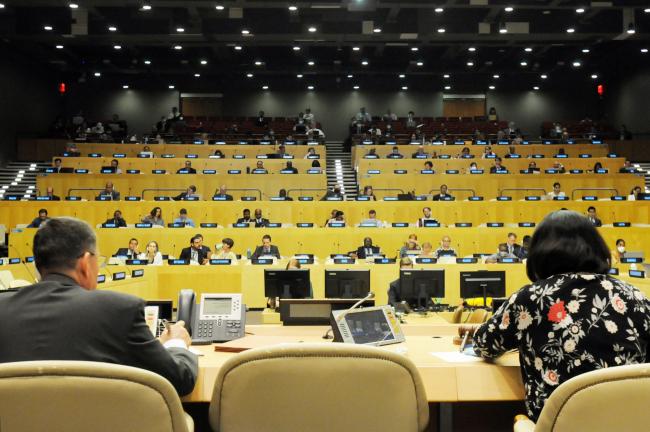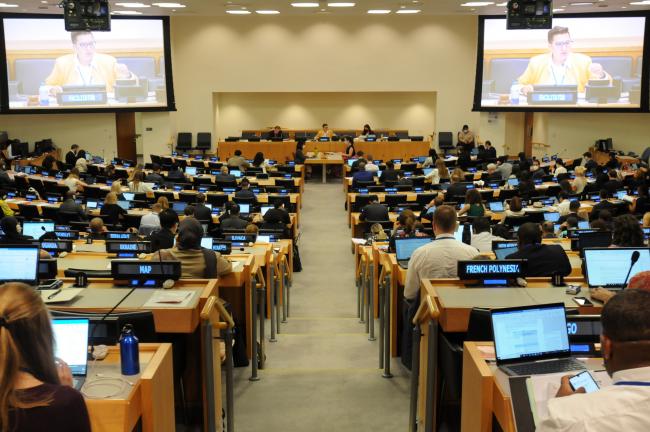Delegates delved right into the nitty-gritty details as the fifth session of the intergovernmental conference (IGC-5) on the conservation and sustainable use of marine biological diversity of areas beyond national jurisdiction (BBNJ) met for a second day at UN Headquarters in New York on Tuesday, 16 August 2022.
Want to dive deeper? Read the full Earth Negotiations Bulletin daily report.
In parallel sessions throughout the day, delegates addressed the main elements of a new treaty on BBNJ, specifically:
- marine genetic resources (MGRs), including questions on the sharing of benefits;
- environmental impact assessments (EIAs);
- measures such as area-based management tools (ABMTs), including marine protected areas (MPAs); and
- capacity building and transfer of marine technology (CB&TT).
In their discussions on MGRs, delegates focused their attention on draft treaty articles related to the fair and equitable sharing of benefits. They considered two detailed options contained in the revised draft text of the agreement, and also heard new joint proposals to operationalize an access and benefit-sharing mechanism. On ABMTs, delegates continued a long-running discussion on the difference between an ABMT and an MPA, with delegations clarifying their understanding on the definitions of both, but not making significant progress yet.
Delegates also began an article-by-article reading of the section on EIAs, starting with objectives. Here, they heard an additional proposal on building the capacities of developing countries to conduct EIAs and strategic environmental assessments, which delegations were amenable to consider. Finally, in their discussions on CB&TT, they spent a good amount of time whittling down options related to monitoring and review modalities, at the end of which IGC President Rena Lee noted her intention to revise this part of the text for delegations to consider in a small group setting.
One of the themes of discussions on Tuesday seemed to be a reminder for treaty text “to not be too prescriptive.” On the one hand, this would enable the treaty to be broad enough to encompass new ideas in future, but on the other, it may obscure the specificity of the new instrument. Another point running through the day was “rehashing old arguments,” with delegates still struggling to find common ground on key issues, including the sharing of monetary and non-monetary benefits, and the mandatory or voluntary nature of CB&TT. Work continues on Wednesday.
All ENB photos are free to use with attribution. For photos from BBNJ, please use the following attribution: Photo by IISD/ENB | Diego Noguera.
To receive free coverage of global environmental events delivered to your inbox, subscribe to the ENB Update newsletter.




































